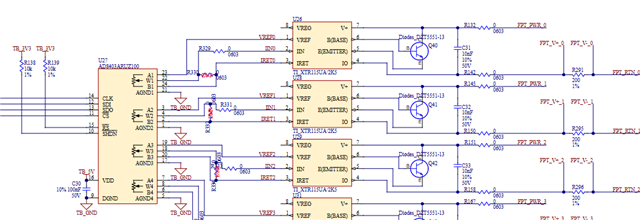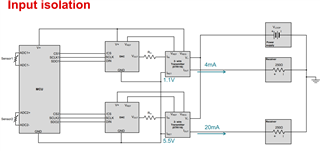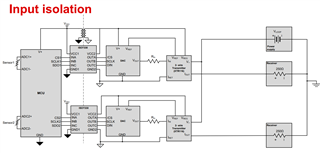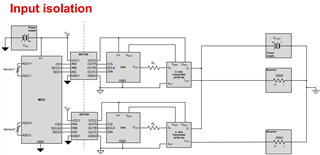Other Parts Discussed in Thread: XTR111, DAC084S085, XTR116
Tool/software:
Hello,
I am using the XTR115 along with a 100k digital potentiometer as shown in the following schematic: 
I am having a lot of issues with debugging this circuit, however. As is, I notice that the Vref voltage is quite low and Vreg is quite high. I believe the ESD protection circuit in the digital potentiometer is sinking the current and dropping the voltage of the floating XTR115. Only when I ground Iret to my test board ground does Vref = 2.5V and Vreg = 5V. I also replaced the R339 with a 40k resistor and was able to output a current/vary the voltage going into Iin. However, the current is far too small for the desired 4-20mA range (2.5/40k = about 6mA). I also considered powering removing the Vref connection and powering from an external source but that similarly had issues. What am I missing here? Why is Vref + Vreg dropping? Why is there a 1V+ potential between Iret and my TB_GND? Are there any simple solutions to fix my circuit? Do I need to swap out the 100k pot for something smaller to get the desired range? Any advice would be most welcome.
Also, I isolated both and confirmed that both the digital pot and the XTR115 were working correctly independently. Only once they are implemented as above do these issues occur.





